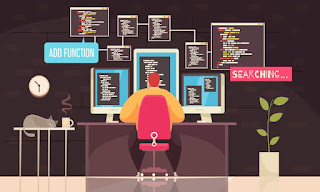Unveiling Inspection of Pipelines with Drones and Computer Vision in the Oil & Gas Industry
Over the years, traditional industries have faced challenges in quality control, relying on manual operations that were time-consuming and prone to errors. Across manufacturing facilities, manual inspections are increasingly being replaced with advanced technologies like mass defect detection. As industries evolve, technological advancements continue to transform manufacturing lines, yet quality assurance remains a significant concern.
In this article, we explore how computer vision is revolutionizing various industries such as automotive, healthcare, retail, and manufacturing. By analyzing vast databases and recognizing patterns in images, computer vision is redefining quality control and defect detection.
What is Computer Vision?
Computer vision is a technology that enables machines to process visual data, extract insights, and make data-driven decisions. In quality control, computer vision assists computers in gathering critical data from images and videos, allowing businesses to make informed decisions. The technology enhances defect detection, predictive maintenance, and workplace safety through automated image processing.
Leveraging Computer Vision for Flaw Detection
Computer vision models learn to recognize patterns and features associated with different types of defects. By training these models on vast datasets containing defective and non-defective products, businesses can develop custom models tailored to their specific needs. These AI-driven systems categorize flaws in real-time, enabling manufacturers to improve quality assurance while minimizing errors.
The Importance of Visual AI Defect Detection in Manufacturing
Defective Product Detection
Computer vision in defect detection can analyze a product’s orientation, positioning, and texture while identifying anomalies. Businesses using computer vision benefit from a modern defect detection model that provides multiple advantages. By leveraging this technology, manufacturing companies can enhance product quality and streamline production.
Diminishing Labor & Operational Costs
Manual inspections are often labor-intensive, error-prone, and risky. Automating these processes with computer vision reduces human intervention, thereby cutting labor costs and improving operational efficiency. AI-powered image processing tools enable rapid defect inspection along production lines, reducing manual workload and ensuring accuracy.
Optimizing Material Inspection
Computer vision helps in recognizing low-quality materials before production begins. Poor-quality materials lead to resource wastage, revenue loss, and customer complaints. By identifying and segregating faulty materials early in the production process, businesses can prevent unnecessary losses and improve overall efficiency.
Predictive Maintenance with Computer Vision
Predictive maintenance powered by AI assists businesses in preventing unexpected equipment failures. Machine learning algorithms analyze operational data to predict potential failures, enabling proactive maintenance. By addressing defects before they escalate, manufacturers can enhance product quality, minimize downtime, and optimize costs.
Ensuring the Safety & Security of Workers
Computer vision enhances workplace safety by monitoring real-time video feeds and detecting potential hazards. AI-powered systems analyze worker movements, ensuring compliance with safety protocols such as wearing masks and PPE kits. These insights help facility managers maintain a secure working environment and reduce accident risks.
Recognizing Defects in Packaging
Maintaining product quality extends to packaging, where defects can impact brand reputation. Vision AI systems detect damaged packaging based on specific image attributes. By integrating deep learning and neural networks, these systems identify and categorize faulty products with high precision. Processed visual data is analyzed through convolutional neural networks, ensuring accurate defect detection.
Barcode Generation & Analysis
Barcode verification is essential for ensuring accurate product information. Computer vision systems scan barcodes to detect errors and inconsistencies. The technology flags faulty barcodes, preventing defective products from reaching consumers. Automated barcode analysis streamlines inventory management and quality control.
Inventory Management System
Computer vision facilitates efficient inventory management by tracking stock levels and monitoring product status. AI-driven systems send real-time alerts to facility managers, enabling proactive decision-making. This technology enhances warehouse operations, reduces inventory discrepancies, and improves overall supply chain efficiency.
Workplace Safety for Workers
Ensuring a safe working environment is a priority for industries, and computer vision plays a crucial role in achieving this goal. AI-powered systems monitor workers’ compliance with safety protocols, detecting whether employees are wearing protective gear. Facility managers receive instant alerts when safety violations occur, allowing them to take corrective actions promptly.
Leveraging Object Detection to Detect Flaws
Computer vision automates defect detection through pre-trained object detection models. Platforms like Roboflow Universe provide access to open-source datasets and pre-trained models, allowing businesses to deploy AI-driven inspection systems. Roboflow inference enables users to integrate these models into applications, streamlining flaw detection and quality control processes.
Computer Vision in the Electronics Industry
Beyond manufacturing, computer vision plays a vital role in the electronics sector. The technology identifies defects such as scratches, cracks, and missing components, preventing significant financial losses. AI-driven inspection systems provide faster and more accurate results than traditional manual inspections, ensuring high-quality production standards.
Final Thought
Computer vision is transforming defect detection and quality assurance, eliminating manual errors and enhancing production efficiency. Automated defect detection powered by AI ensures precise flaw identification, reducing waste and improving product reliability. Object detection models fine-tune defect detection for specific use cases, seamlessly integrating with automated assembly lines.
At Nextbrain, we specialize in AI-driven defect detection solutions tailored to various industries. Our AI Video Analytics Software enhances quality control, workplace safety, and operational efficiency. Connect with our experts to explore how computer vision can elevate your business operations.
.png)
%20(1).jpg)

Comments
Post a Comment